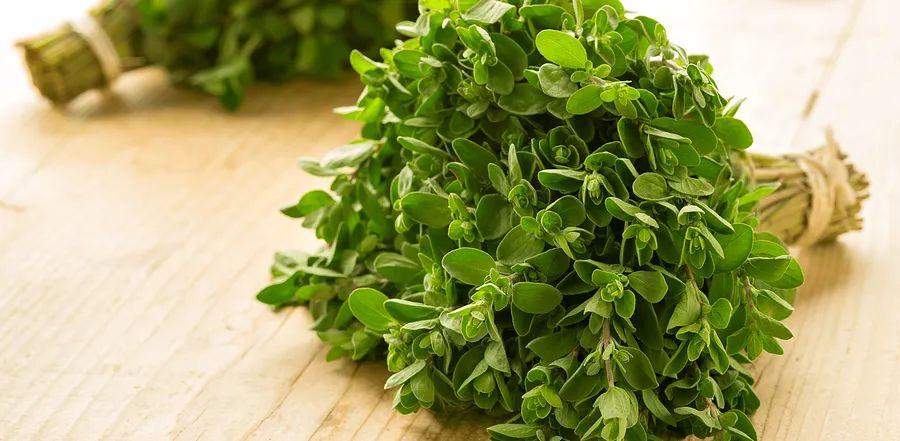What is Marjoram and What Are Its Best Substitutes?

Discover why marjoram, an ancient herb, is worth adding to your culinary repertoire.
Understanding Marjoram
Marjoram is a hardy, perennial herb belonging to the mint family.
Originating from the Mediterranean, Asia, and Africa, marjoram was once revered by ancient cultures as a symbol of joy. In Greek mythology, the goddess Aphrodite is said to have cultivated marjoram in her garden.
The soft, green leaves of marjoram grow in small clusters that resemble little knots, earning it the nickname "knotted marjoram."
The Origanum genus includes 40 species, but only one is considered true marjoram; the others are classified as oregano.
What Does Marjoram Taste Like?
Marjoram has a deep, earthy flavor with hints of pine and citrus. Its taste is warm, sharp, and slightly bitter, evoking the flavors of oregano and thyme.
How to Use Marjoram in Cooking
Marjoram is commonly used to enhance the flavor of soups, stews, salads, sauces, dressings, and more. It can also be brewed into a soothing herbal tea.
Fresh vs. Dried Marjoram
Marjoram is available both fresh and dried.
For the freshest flavor, add marjoram leaves at the end of cooking to preserve their bright and intense taste. Dried marjoram, on the other hand, is perfect for blending with other herbs or for use in any recipe calling for dried herbs.
Dried marjoram has a stronger flavor profile compared to its fresh counterpart.
Marjoram Substitutes
When selecting a marjoram substitute, consider the flavor profile of your dish. If the recipe calls for fresh marjoram, opt for a fresh alternative. For dried marjoram, choose a dried substitute to maintain consistency.
- Oregano: Whether it's dried or fresh, oregano is always your best bet as far as marjoram substitution goes. Marjoram is slightly sweeter and milder than oregano, though, so it's important to adjust your recipe accordingly.
- Thyme: Thyme and marjoram come from the same family, so it's natural that they share some common flavors. If you don't have any oregano on hand, use thyme.
- Basil: Another mint family member, basil could work in a pinch. However, discerning palates will be able to easily tell the difference.
Health Benefits of Marjoram
Marjoram boasts several nutritional benefits, such as:
- Marjoram is rich in antioxidants, which can have anti-inflammatory properties. Chronic inflammation may lead to chronic diseases like cancer and diabetes.
- Though its effectiveness has not been definitively proven, some research suggests marjoram may have antimicrobial uses. This means it may help to treat things like fungal infections and bacterial overgrowth in the gut.
Marjoram Recipes
Check out some of our favorite recipes that showcase the rich, earthy flavor of marjoram:
- Herbed Pork Chops with Homemade Rub
- Split Pea Soup
- Herbs de Provence
- Chicken Manicotti Alfredo
- Fettuccine with Garlic Herb Butter
- Kielbasa
- Marjoram and Citrus Fish Marinade

1

2

3

4

5
Evaluation :
5/5